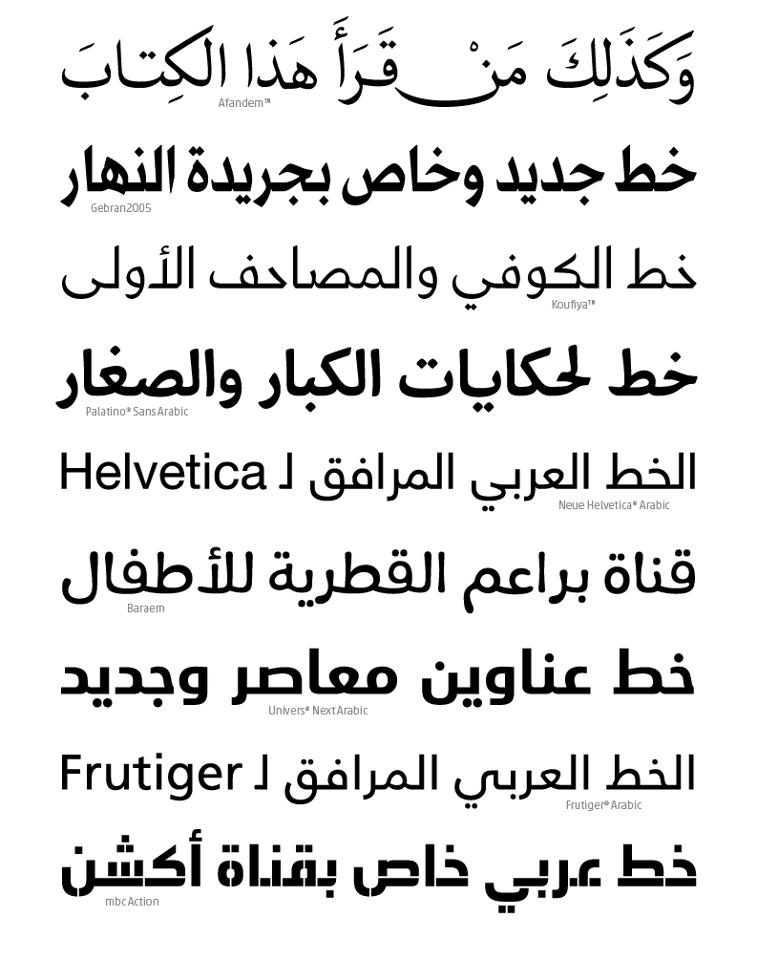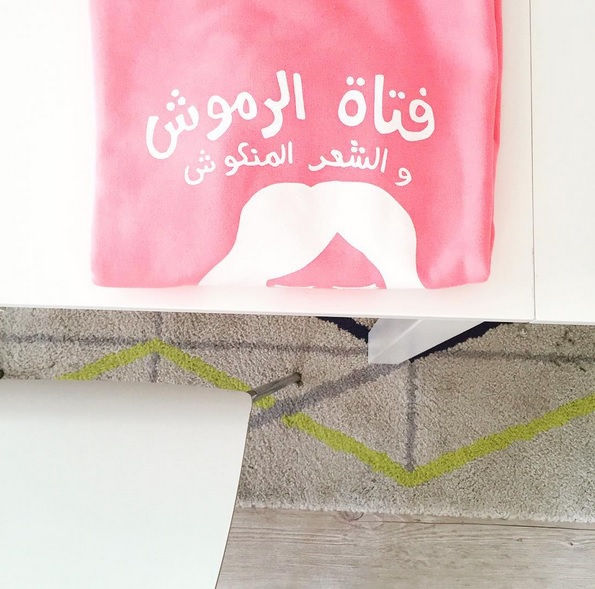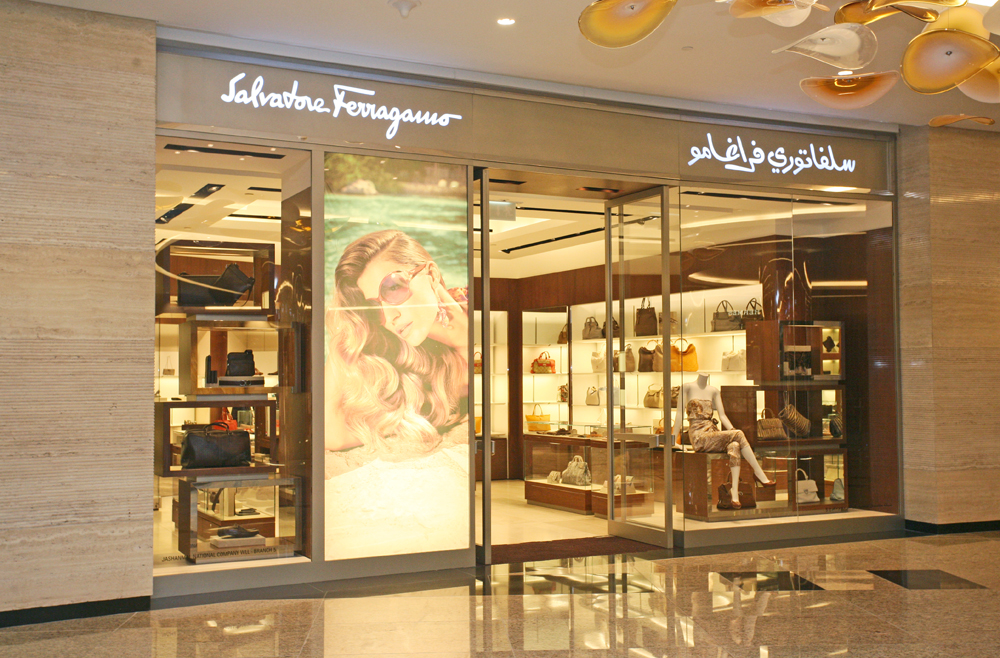By Yara Boraie
One of the most ancient languages in the world and the fastest growing language in the United States today, Arabic is known for its rich history and beautiful, yet complex, script design.
As the official language of more than 24 countries in the Middle East and Africa, Arabic has become increasingly popular at universities, given the Middle East’s rise in significance in the last few decades. Its script has been written and rewritten in different styles across the Arabian Peninsula and expansive Islamic empire for centuries to develop into the beautiful shapes and curves we know today.
Today, graphic designers, typography specialists and fashion designers have drawn inspiration from the ancient script, breathing new life into the way the world sees and reads the language.
Back in 1899, Arabic script was first standardized to a typewriter keyboard. Modernizing the Arabic script through technology, designers at Google came up with their very own computer-generated font called Noto Arabic in 2010 – one of the most globally used Arabic fonts today. While iOS devices use the more conventional font resembling the Naskh script, people using Android devices will notice a different custom font script that looks more creatively beautiful. The font was developed due to the lacking variety of computer-generated Arabic fonts at the time, limiting creativity for graphic designers and typographers influenced to take on Arabic-inspired projects.
As businesses brand themselves on an international scale, digitizing the ancient script beyond a few common fonts has become a crucial aspect of successful marketing and advertising to cater to the fast growing market in the Middle East and transform the identity of the ancient script into a more modern, trendy format. As the masses become increasingly reliant on technology, the revival and reinterpretation of Arabic script and calligraphy is certainly called for.
“Now we are trying to as much as possible gain back the elegance and the calligraphic aspect of the Arabic instead of only simplifying it and making it fit into this limited technology,” said Lebanese designer Pascal Zoghbi, the creative behind Google’s Noto Arabic. “Fifty or sixty years later, the technology caught up to the needs of the Arabic.”
Creating Arabesque fonts
Award-winning Lebanese type designer Nadine Chahine – known for redesigning Western typefaces to create Arabic versions such as Neue Helvetica, Palatino and Frutiger – has conducted a two-year process of experimenting with different calligraphic styles, such Naskh and Nastaaliq style (predominantly used in Iran and South Asia).
Taking counsel from German designer Hermann Zapf, the creator of one of the most recognized cursive typefaces in English titled Zapfino, Chahine decide to create an Arabic version, by redesigning the original Latin one – which is usually used in greeting cards, on wedding invitations, and the printing press – and calling it Zapfino Arabic.
“Calligraphic typefaces [in Arabic] – what would be comparable in Latin script typefaces – are few in number. You can count them on one hand and they’re all in very classical styles. And all of them come with their own set of connotations. One is very traditional. One is very poetic. One is very religious. One is very typical. It gets to be too predictable,” Chahine told Digital Arts Online. “There wasn’t a calligraphic typeface that would be different from these already existing flavours, so that was nice because I had more freedom there to design something that people would like without it necessarily being very classical in design.”
One of the main challenges faced by designers incorporating Arabic script in technological typography is the connectivity between Arabic letters that changes how a letter is written based on its position, unlike the standard shape and positioning of Latin alphabets.

“The most important thing in an Arabic typeface is to maintain the illusion that one brushstroke wrote the whole word,” Chahine said. “When they connect, you need to feel that it’s one single movement, but in reality these are very different characters that are just put side-by-side. If you don’t have the logic of how to combine them and how to draw a curve that is actually cut in half and then put it together so that it looks like it’s one curve, it becomes quite complicated.
Infusing fashion with calligraphy
Beyond its beauty, complexity and remarkable history, with time calligraphy has become an underrated art form to the point of neglect.
Middle Eastern-based fashion designers have also drawn inspiration from the Arabic script and now are now etching it into their pieces – maintaining the Arabic culture by celebrating its artistry and showcasing modern Arab identity through a globally aesthetic, yet everyday medium.
Lebanese designer Rima Karimeh Suruta, owner of Dubai-based accessories shop “Ash,” says adorning fashion items with the ancient script has become one of the most followed fashion trends recently, by both Arabs and foreigners alike.
“We started seeing that there is an emerging trend with things that have Arabic calligraphy. Two years ago, it was the Chinese calligraphy. Now it’s Arabic. Many of our non-Arab customers like to buy accessories with Arabic calligraphy as souvenirs. They also insist on understanding the letters they are wearing,” Suruta said.
Middle Eastern design house Noon T-Shirts also aims to reintroduce the language and its ancient script in the fashion world as a tool to merge the East and West and reflect a non-Orientalist Arabia in its true, modern nature.
Local designers like Saudi-based Alaa Balkhy of Fyunka, Emirati Fatma Al Mulla and Qatar-based Buthaina Al-Zaman of Bothayna designs are known for their brilliantly quirky and modern blends of Khaleeji culture and Arabic sayings in their own creations.
“It’s fun to reinforce our identities in the things we wear. I do think that this part of our culture, this beautiful artistic art, which was used to design so many things in the past, should [be] modernized and used in the things we wear today,” said Nur Amer, an aspiring Palestinian designer living in Dubai. “Not only is Arabic calligraphy beautiful, but in a day and age where either you’re dressed in traditional things or modern brands, it’s great to find something in between.”
Even today, calligraphy script acts as a unifier between different countries and cultures – be it in the artistic form of architecture, fashion, literature or visuals.
Lebanese designer Huda Smitshuijzen Abifarès even founded the Amsterdam-based The Khatt Foundation which aims to modernly conceptualize the traditional lettering by connecting cross-cultural links.
Captivated by the origins of calligraphy, Dutch artist Eric de Waal says Arabic culture and art were always a big inspiration for him.
“I was mostly inspired by the habits of Arabic people and shapes of Arabic art and how they are being used in a modern context,” said de Wall. “I set out to know more about the Arabic culture but had my eyes opened to the very concept of ‘culture’ in a manner they weren’t before.”
De Waal ended up creating a new font – ‘Kalilah,’ which is Arabic for ‘sweetheart’ – that he says pays homage to the continuity and movement of the Arabic language.































Comments